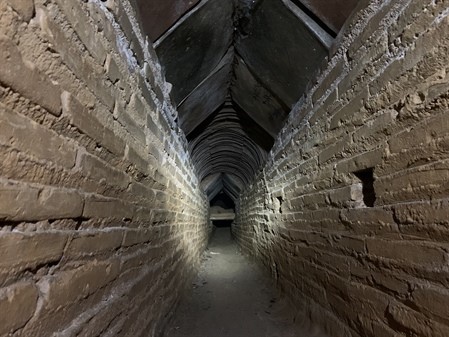Hadrian’s Aqueduct
Informations
Address:
Leof. Kapodistriou 51, Nea Ionia 142 33, Greece
Hadrian’s Aqueduct
The Hadrian’s Aqueduct of Athens was built in 140 AD and is the only Roman aqueduct of this type and length built in Europe that still carries water. It is 20 km long. It starts at the foot of Mount Parnitha and ends at the two Dexamenes (tank) (1870) in Dexameni Square in Kolonaki. Its design follows the gentlest route between these two places in terms of altitude. The water comes from the hydro-flooding of the underground aquifer, but also from the streams that the aqueduct meets on its way. The aqueduct connects the districts of Acharnes, Metamorfosi, Heraklion, Chalandri, Amarousio, Filothei-Psychiko and Athens. Its water is suitable for irrigation and other non-potable uses. In its underground tunnel (height 1.20m – 1.60m and width 0.80m), the water flows with a natural flow thanks to its slope. The project was constructed by drilling 465 wells (from 10m to 42m deep) along the trench. The tunnel was dug from two adjacent wells, one after the other, until they met. These shafts, which can still be seen today, were also used to ventilate, light and clean the tunnel. The Hadrian aqueduct was cleaned and repaired at intervals between 1870 and 1932, when parts of it were incorporated into the new Athens water supply network built by OULEN.
Today it has been demolished in several places due to wear and tear, but also because of the development of the city above it (metro constructions, Olympic projects, etc.). However, it still has water thanks to the construction that penetrates the underground aquifers. The aqueduct is an inactive part of the water supply system acquired by EYDAP (Athens Water Supply and Sewerage Company) from the OULEN Company. Today, 390 aqueduct wells have been identified. Of these, 228 are visible and 174 of the visible ones are in the public domain. For the time being, this literally unique element of European cultural heritage remains unseen and largely unused, both as a monument and as a water resource flowing underground in the city of Athens. It is used by the Municipality of Metamorfosi to irrigate 80% of its municipal green areas. The aqueduct runs underground through seven municipalities with different characteristics. Starting from Acharnes, passing through the Olympic Village and several other suburbs (of the main northern sector) and ending in Kolonaki, the Hadrian’s Aqueduct implies that the creation of a network between different worlds is possible. This creates a challenging but fruitful condition of cooperation and interaction between students with different backgrounds and daily lives.









